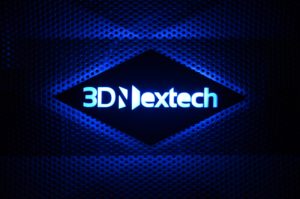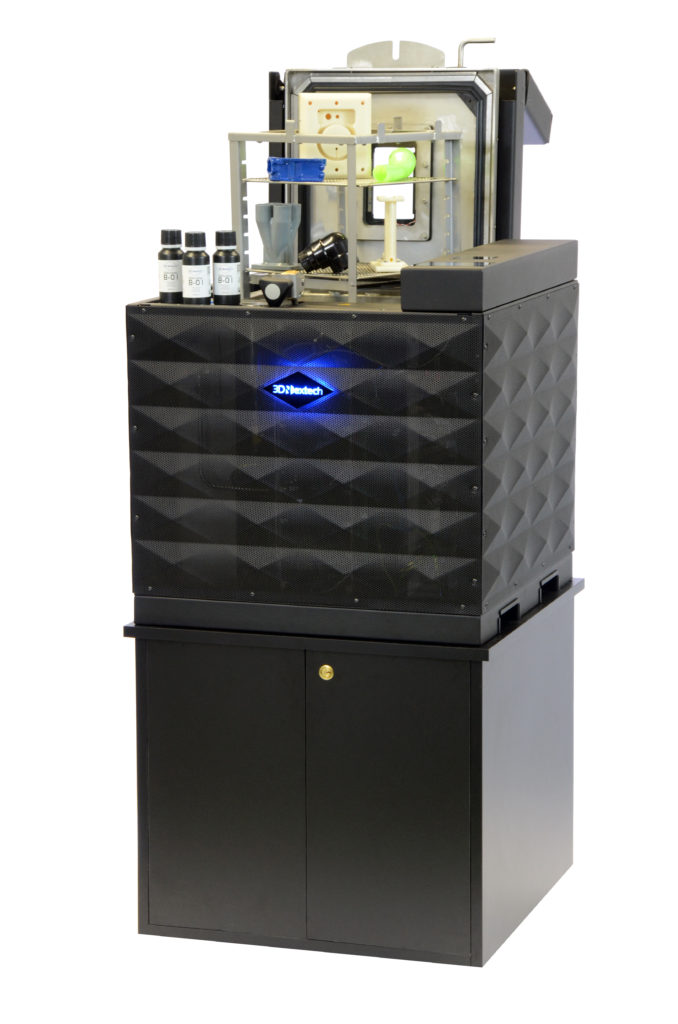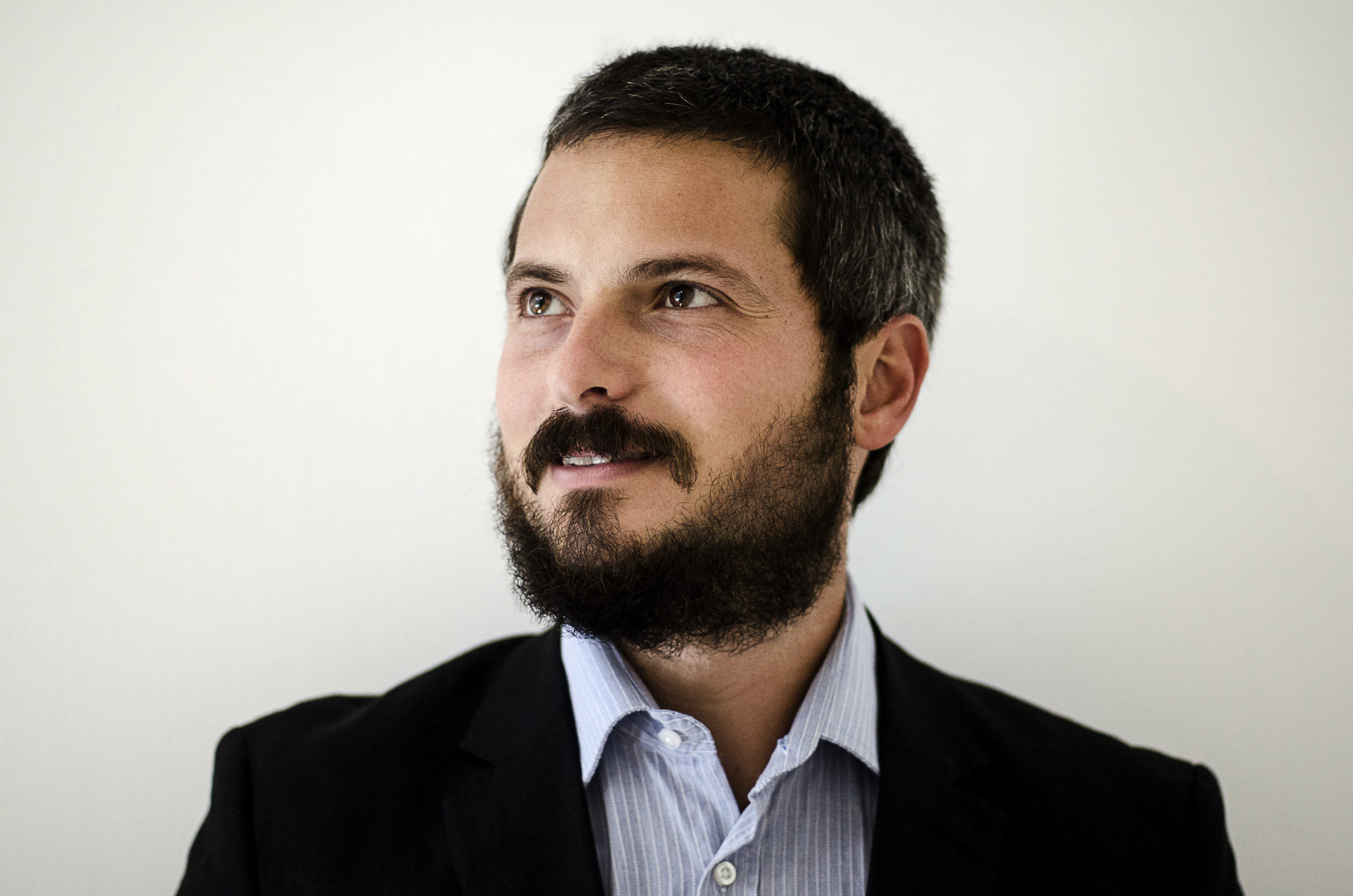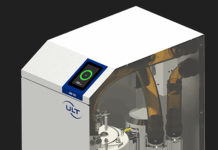3DNextech, a young Italy-based startup that specializes in the development of products & technologies related to the world of digital manufacturing, additive manufacturing & 3D printing has recently raised attention from visitors at MECPSE 2019, an important international manufacturing fair in Italy.
We have recently come across the company’s innovations in our search for post-processing solutions dedicated to additive manufacturing. As you may know, today, it is not yet possible to guarantee a perfect rendering of the part after the 3D Printing process. However, a thorough analysis raised our interest in the company’s unique mission: “transform the 3D Printing world using connected devices”.
How does the company intend to perform that? – We have asked Andrea Arienti, the founder of the company, to reply to this million-dollar question. #OpinionofTheWeek
A few words on Andrea Arienti
Andrea Arienti is a scientist par excellence. As a scientist, his journey started a decade ago within the laboratories of The BioRobotics Institute of the Sant’Anna School of Advanced Studies where 3D Printing was mainly the only reliable option to fabricate non-conventional soft robots. We are then in 2008.
During these beginnings, he quickly noticed the first limitations of this technology: lack of compatibility with water, limited mechanical performances and proliferation of algae in their robots. To remedy this situation, he built a first 3DFinisher prototype that led to the success of several robotic applications at the time.
One thing led to another, in 2015, Andrea and his partners take the decision to found a company whose aim is to drive the development of technologies to help the transition from “mass production” to “mass customization.” Until today, it is with 3DNextech that they really started to push the boundaries of additive manufacturing technologies, by making them automatic, repeatable, easier to use, and production-ready.
On your website, we can read that 3DNextech focuses on connected devices used both in digital fabrication and additive manufacturing. What are these devices?
The 3DFinisher is just the first piece of the puzzle of an entirely new additive manufacturing paradigm. Our mission is to completely transform the 3D printing world, moving from prototyping to production, from mass production to mass customization: we have eight other disruptive technologies currently being developed, tested and patented, that will potentially revolutionize every single aspect of additive manufacturing.

Tell us more about the 3DFinisher
During MECPSE 2019 (one of the most important international manufacturing fairs, held in Parma this year) we have launched on the market our 3DFinisher machine, the first device for the automatic surface finishing of ABS, ASA, and Cellulose Acetate parts. Offering a 300x300x300mm workspace, this B2B machine was designed with SMEs in mind, but the technology at its core is scalable, and could be engineered for bigger industrial contexts resulting in turnkey projects.
Simply put, how does it work in general?
To date no 3D printer can guarantee a perfect surface finishing of printed parts. Raw 3D printed parts can only be considered semi-finished products, that require a considerable amount of additional work in order to improve the aesthetics of the surface as well as the mechanical properties of the parts (e.g. manual sanding, application of resins, primer, etc). These manual treatments entail considerable costs for companies and only partially solve the problem: the final quality is often not satisfactory, and even when it is, repeatability is not guaranteed by any means. In many contexts, these shortcomings hinder the widespread adoption of 3D printing for production purposes. 3DFinisher was designed precisely to solve all of these issues. Raw parts are placed inside the device, and undergo an automatic and patented chemical-physical process which makes them stronger, glossy, waterproof, dirt resistant, washable and sterilizable. The device is plug-n-play, safe, and does not require additional infrastructures such as fume hoods. Completely interconnected and fully compliant with the Industry 4.0 principles, the machine can be controlled and monitored remotely. One finishing process lasts 60 minutes on average: it can smooth several objects at the same time, and makes use of disposable cartridges containing our proprietary solvent, which are sold separately.

The workflow goes as follows:
- PREPARATION
The operator places the raw objects inside the sealed work chamber, sets the process parameters and places a disposable cartridge containing our proprietary solvent inside the 3DFinisher. - PROCESS
Parts undergo a chemical-physical process which takes place in controlled atmosphere (pressure, temperature). - RESULTS
After the process all parts achieve a perfect, uniform surface finishing, becoming waterproof, paintable, smooth and glossy. Mechanical properties are considerably improved as well.
Are there any specifications related 3DNextech’s 3DFinisher? Can we get a price range f this product?
Our patented technology is based on a chemical-physical process which takes places in very specific atmospheric conditions: the 3DFinisher finely controls all parameters inside the sealed chamber in such a way to guarantee a perfect and repeatable enhancement of all parts. The device is very easy and safe to use. The operator never needs to touch the chemical agents, which are sold in thermosealed disposable cartridges. These chemicals are always confined within the machine, and waste products are automatically ejected as well at the end of the process. The device is plug & play, and does not need any additional infrastructure (e.g. no fume hood is needed). It can be operated via the on-board display or remotely (through smartphone, tablet or PC) as it offers WiFi and Ethernet connectivity. The process lasts approximately 60 minutes, and the inner workspace can be filled with any given number of parts to be treated simultaneously, as long as they fit in. When compared to alternative postprocessing procedures currently performed by many companies, the 3DFinisher allows an evident reduction of costs and times, while achieving better and fully repeatable results. Its cost varies based on the specific package, ranging from 15k€ to 35k€.
Does the 3DFinisher currently constitute the main product that you provide with customers?
3DNextech also supports their customers in designing and/or optimizing their additive manufacturing workflows, in such a way to enable new applications, increase quality, and support their business model. With our counseling services we support the client through the entire production pipeline: we can start helping at the design stage (a good print starts with a properly optimized 3D model, an aspect that is often overlooked) and support in the choice of the most appropriate printing materials, technologies, and postprocessing treatments. In parallel, we keep investing heavily in R&D, in such a way to extend the application scenarios of our 3DFinisher and bring other innovative additive manufacturing and postprocessing technologies to the market in the near future.
You laid emphasis on the “made in Italy” on your website. Does that mean that you will only focus your development in the Italian market for now?
Italy is one of the leaders in the construction of manufacturing machines worldwide, and is internationally renowned for delivering quality products: we are proud of this, it is in our DNA, and we do everything we can to contribute to the image the world has of our country in this context by delivering the best quality to our clients. However, despite Italy being the seventh manufacturing country worldwide and the second one in Europe after Germany, we do not want to restrict to the Italian market only. We consider the Italian market as a pilot market, a test bench for our company, but intend selling our machines and services worldwide. In order to maintain our standards in terms of customer care, support, and dedicated counseling, a solid path towards internationalization will be required, as well as adequate investments: this will take some time, but it is definitely in our agenda. In the meanwhile, our 3DFinisher is CE marked and was also approved and certified by TÜV SÜD Octagon: these certifications represent quality assurance for our clients, and will allow us to sell our device in Europe very soon.
Any future projects in the box?
We plan on putting a new postprocessing device on the market within 2020: it will be similar to the 3DFinisher, but it will target the surface finishing of Nylon PA12 e PA11, two materials that are more and more being adopted in the 3D printing world. We have many other projects and technologies we are working on at the moment, most of which cannot be disclosed at the present time for reasons that have to do with IP protection. Generally speaking, however, we are working on devices and technologies that we hope will boost the current additive manufacturing technologies. In some other cases instead, we plan on completely disrupting current solutions, providing radically new approaches.
Any last words to add?
People traditionally think of manufacturing as a rather self-contained process: we are trying to promote a considerably broader view of this field. Additive manufacturing technologies can in fact greatly influence processes such as logistics, and can even redefine and/or enable the company business models. The influence these technologies can have on the conventional design process is also very evident. In order to exploit the full potential of these new technologies, traditional mechanical design workflows should be revised and updated in light of the new possibilities that these offer, and the constraints and assumptions they are overturning (such as the fact that a functional object should be composed by a number of homogeneous subparts – in terms of physical and chemical characteristics, or the morphological constraints arising from conventional production methods based on material deformation or subtraction, no longer holding).
This revolution is taking place not without difficulties and misunderstandings. By comparing these new technologies to conventional ones in specific contexts where the latter have proven to work just fine, some critics argue that there is no true benefit in adopting additive manufacturing technologies at all. At the other side of the spectrum, some describe these technologies as miraculous solution to all problems, which should completely replace all previous manufacturing schemes and work their magic with no need for the user to get involved in the process. Both these lines of argumentations are of course not completely true in our opinion. The additive approach has the potential to truly disrupt the manufacturing world, but as every other new technology it needs to be comprehended, optimized, tailored to the specific needs of the client, compared to alternative solutions case by case. There will be cases where traditional technologies will still be the best choice, others where an application could only be realized by adopting more innovative paradigms and materials, and still others where a combination of older and newer production schemes might be the best bet.
Trying to replicate objects of the past with additive technologies is often a mistake and a missed opportunity. What 3DNextech is trying to do is to design and leverage innovative additive manufacturing technologies to design the objects of the future: we stand beside companies which want to become first-movers in this sense, doing our best to support their transformation.
You can now post free of charge job opportunities in the AM Industry on 3D ADEPT Media.
For further information about 3D Printing, follow us on our social networks and subscribe to our newsletter : Facebook, Twitter, LinkedIn & Instagram !
https://pagead2.googlesyndication.com/pagead/js/adsbygoogle.js
(adsbygoogle = window.adsbygoogle || []).push({});






